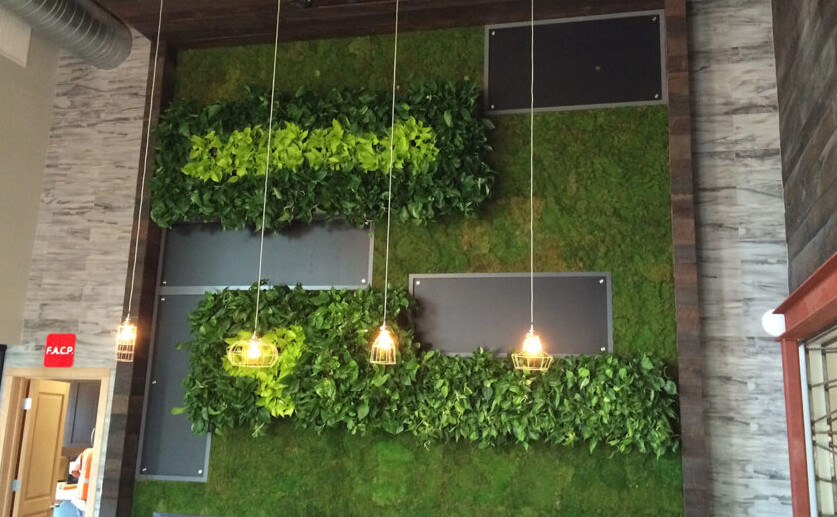
Plants for clean air message is spreading around the world
Again this year Green Plants For Green Buildings had the opportunity to spread its message at the GreenBuild Conference and expo in Chicago. GPGB along with FNGLA (Florida Nursery Growers and Landscape Association) and NFF (National Foliage Foundation) shared a booth in the expo gallery at McCormick Place.
Join the Movement
Become a part of the green building revolution. Learn how you can incorporate indoor plants into your building projects for better air quality and healthier environments.
Highlights from the GreenBuild Conference in Chicago
The conference and expo, as always, was well attended. USGBC reports 28,000 attendees from 114 different countries along with some 1800 booths. “Clearly our plants for clean air message is being heard around the world” said conference attendee and GPGB representative Joe Zazzera. “We continue to solidify our place in the green building industry. There is no doubt, plants belong in healthy, green buildings”
GreenBuild Conference: Collaboration Between GPGB and USGBC
During the GreenBuild conference, Zazzera, along with Viridian representatives April Ambrose and Matt Bell had a scheduled informal meeting with USGBC manager of LEED technical development Batya Metalitz. The group discussed the current proposed GPGB LEED pilot credit and the process under which it will now flow through the USGBC.
GreenBuild Conference: Advancing the Plants for Clean Air Initiative
With new process changes being made to LEED, the actual submittal may not be reviewed until the second part of 2011. The new piloting process is not yet fully formed or complete by the USGBC. This has led to some minor delays in its formal review. “Although this delays our process slightly, the weighting factors for credits will be more defined and known”, Said Zazzera. “This should give us a clearer definition of how many points may be possible for indoor plants, atria and living walls”.
If accepted by the USGBC, the LEED pilot credit will award points under the LEED category IEQ (Indoor Environmental Quality). There is a substantial body of research and evidence that proves that living indoor plants provide better air quality, lower absenteeism, higher employee productivity as well as significant improvement to the quality of the indoor environment. The Interiorscape Industry Coalition (ICC) funded the LEED pilot credit program, for development early last year.
In the interim, Batya and the USGBC have recommended that as a group, we continue to look for projects that will or have received credits through LEED in the ID (Innovation In Design) Category. Projects such as The WESST building in Albuquerque, New Mexico and the Ecology and Environment (E & E) Headquarters in Lancaster, New York will help build the case for the credit.
“It has been a seemingly slow process”, said Zazzera “but I believe we have a solid, quality credit that, even if it doesn’t make it into LEED, will give us the template we need to guide our clients.
Contact Us
Have questions or want to discuss potential projects? Connect with our experts to learn more about how indoor plants can benefit your building.
